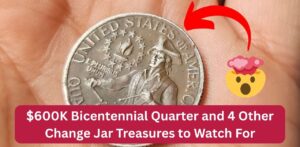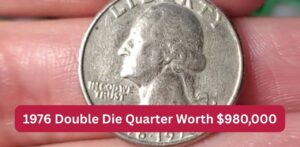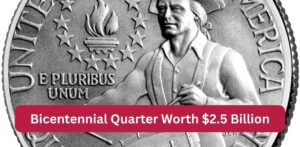Imagine paying for coffee with a $5 bill and later finding out that same bill could have earned you over $2,000 at auction. That’s exactly what’s happening with a rare printing mistake on the 1995 $5 bill featuring an inverted Treasury seal. These rare error notes are still in circulation today—and you might already have one.
What Is the Inverted Seal Error?
All U.S. bills are printed with a green Department of the Treasury seal, typically located to the right of the portrait. On a normal note, the seal appears upright and precisely aligned. But in the 1995 Series $5 bill, a misprint during production caused some of these seals to be printed upside down or at a sharp angle—a rare and valuable error now known as the inverted seal.
This type of mistake occurs during high-speed printing, when sheets are slightly misaligned before the seal is applied. These notes passed through quality control unnoticed, making their way into everyday circulation.
Why Are Inverted Seal Bills So Valuable?
Collectors value inverted seal bills for their rarity, visual appeal, and historical uniqueness. Depending on the condition of the note, these bills can sell for $1,000 to over $2,500 at public auctions. Even lightly circulated versions often fetch hundreds, especially when authenticated by professional grading services.
How to Spot a 1995 $5 Bill With an Inverted Seal
1. Check the Series Year
To the left of President Lincoln’s portrait, look for “Series 1995.” The inverted seal error is confirmed to occur only on bills from this series.
2. Inspect the Treasury Seal
Locate the green seal to the right of Lincoln’s face. On a genuine error note, it will appear fully upside down or at a noticeably skewed angle. The misprint is obvious when compared side-by-side with a standard note.
3. Compare With a Normal Note
To confirm it’s not a visual illusion or damage, compare it directly with another $5 bill. Real inverted seal errors are clean and symmetrical—not caused by ink smears, folds, or wear.
4. Examine the Note’s Condition
Value depends heavily on condition. Bills in uncirculated or crisp condition bring top dollar. Collectors and grading agencies look for notes with minimal handling, no folds, and clean edges.
Real Auction Sales Show the Market Value
In recent years, several 1995 $5 inverted seal notes have sold for impressive amounts. Authenticated examples have sold for $1,200 to over $2,000. One error note, discovered after a bank withdrawal, was later certified and sold for nearly $1,800.
Even notes that show minor signs of wear can still command strong prices when verified by professional grading services like PMG (Paper Money Guaranty) or PCGS Currency.
Why These Error Notes Are Still Circulating
Although these bills were printed back in 1995, many were never pulled from circulation. They were spent unknowingly, stored in drawers, or saved as keepsakes. Since the Federal Reserve never recalled these notes, many could still be found in pocket change or forgotten cash stashes.
What to Do If You Find One
Think you’ve found a 1995 $5 bill with an inverted seal? Here’s what to do next:
- Don’t spend it – It’s potentially worth far more than face value.
- Store it safely – Use a plastic currency sleeve or holder to prevent damage.
- Take high-quality photos – Capture both sides clearly for documentation and verification.
- Get it authenticated – Submit it to PMG or PCGS Currency for professional grading.
- Consider auctioning – Reputable currency auction houses or dealers can help you list it properly.
Final Thoughts: Your $5 Bill Could Be Worth Thousands
Rare currency errors like the 1995 $5 inverted seal note are more than collector curiosities—they’re part of American currency history. With values reaching into the thousands, these bills prove that even small printing mistakes can lead to major financial surprises.
So next time you’re handed a $5 bill, take a moment to check it closely. A simple glance could turn an ordinary transaction into a once-in-a-lifetime discovery.
FAQs
Q: What is an inverted seal on a $5 bill?
A: It’s a printing error where the green Department of the Treasury seal appears upside down or off-angle. These errors are rare and valuable.
Q: How much is a 1995 $5 bill with an inverted seal worth?
A: Depending on condition, it can range from a few hundred dollars to over $2,500.
Q: Can I find one in circulation today?
A: Yes, many are still in use or stored unknowingly by people who don’t realize their potential value.
Q: Where can I sell a rare currency note?
A: Use professional platforms like Heritage Auctions or consult certified currency dealers who specialize in rare U.S. paper money.



